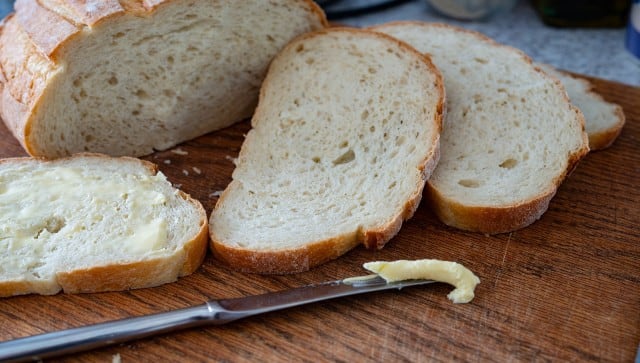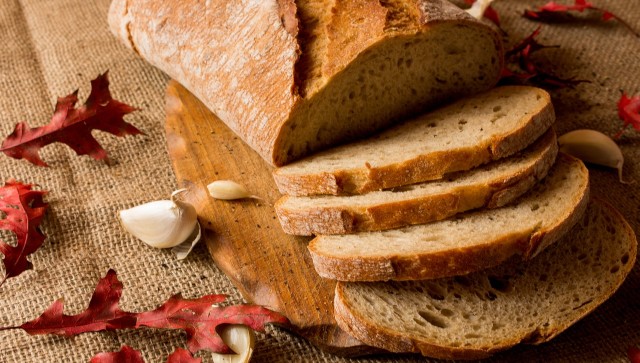Did you have a sandwich or toast for breakfast today? If yes, you celebrated a significant day in the history of bread. In Chillicothe, Missouri, the United States, on this day, 1923, the first packet of “sliced bread” was sold. Sliced bread has become so integral part of our lives today that it even feels weird to think that anyone would ever harbour a grudge against it. But in times of war, America did exactly that. In 1943, the US government took a rather bold step that shocked the country. It banned sliced bread. Yes, the most popular food item was removed from the shelves of every supermarket. You wonder why. Let’s take a look. Also read: American Heart Association endorses DASH diet for a healthy heart: What is it? America’s “unpopular” ban A Missouri jeweller by the name of Otto Frederick Rohwedder created the mechanical bread slicer in 1928. The pre-cut loaves were promoted by bakeries all throughout the country as the “greatest advancement in the baking industry since bread was wrapped,” which is also how the popular expression “the greatest thing since sliced bread” came to be. According to Slurrp.com, the US administration banned the sale of sliced bread on 18 January 1943, the time of World War II. The move was intended to forbid ancillary charges since the cost of flour had gone up in order to prevent an increase in the final consumer’s cost of bread. The prohibition was implemented in order to save money on two items – the pricey bread-slicing equipment and the wax paper used to store it. However, this decision didn’t have the broad support they had hoped for.
On this day in 1928 sliced bread sold for the first time by the Chillicothe Baking Company, Missouri, using a machine invented by Otto Frederick Rohwedder. It was described as the greatest forward step in the baking industry since bread was wrapped. pic.twitter.com/v4IsNYieTq
— David in D/FW, Texas 🇺🇸🙏🇮🇱 (@David_in_DFW) July 7, 2023
The decision was viewed on par with all the other restrictions imposed by the war. According to a 1943 TIME magazine report, US housewives “vainly searched for grandmother’s serrated bread knife, routed sleepy husbands out of bed, held dawn conferences over bakery handouts.” The uneven slices led to a frequent frantic run to the nearby bakery for rolls. Since the move received massive backlash, nobody in the administration wanted to admit that they were the ones who made the new choice. However, at the time, the Price Administration attributed the concept to the agricultural department, which in turn blamed the baking sector. It was later discovered that the idea of banning sliced bread came from food administrator Claude R Wickard. The finger-pointing went on, but by February 1943, American housewives had had enough. [caption id=“attachment_12840782” align=“alignnone” width=“640”] Sliced bread also boosted the popularity of an earlier technology, electric toasters. Pixabay[/caption] According to a report by Harrisburg Telegraph, bread sales actually decreased by five to ten per cent as a result of the ban, which wasn’t even having the essential cost-cutting benefit. On the other hand, the savings on wax paper were insignificant. Thus, the ban was lifted on 8 March 1943. The New York Times ran an article with the headline, “Sliced Bread Put Back on Sale; Housewives’ Thumbs Safe Again.” In American history, this restriction is still seen as a ridiculous event. Invention of the bread-slicing machine Rohwedder, a native of Davenport, Iowa, invented sliced bread. It is still unclear why he decided to switch from cutting jewels to cutting bread as he owned three jewellery stores. Being a creative soul, he enjoyed making improvements to the jewels and watchmaking equipment even while working as a jeweller. According to The Indian Express, he eventually became confident that he could utilise his knowledge to create a bread-slicing machine, so he sold off his main source of income, his jewellery stores, to fund this endeavour. His timing was good as more and more Americans were buying bread rather than preparing it at home. To create the appearance of freshness, factory-made bread has a tendency to be softer than homemade bread, making it more difficult to slice properly. However, a fire that destroyed Rohwedder’s prototype and drawings in 1917 dealt him a serious blow. He moved more slowly as a result, but he continued, according to the report. In the next coming years, he would go on to create a device that could slice and wrap bread. He select the slices’ dimensions by speaking with several women, who told him slightly under half an inch satisfied all needs the best. His friend Frank Bench’s Chillicothe Baking Company used the innovative machine. Thus, on 8 July 1928, Bench’s Bakery offered the first-ever sliced bread for sale. [caption id=“attachment_12840772” align=“alignnone” width=“640”]
 By 1933, sliced bread was outpacing unsliced bread in sales at US bakeries. Pixabay[/caption] Also read: India's bread lovers have every knead to celebrate Its acceptance It was accepted by the populace pretty quickly as the slices were so neat and precise. Clearly better than anyone could possibly slice by hand with a bread knife, according to a quote from the History Channel. “Sliced bread is the standard of all innovation, past, present, and future,” Fox News quoted Ed Douglas, a businessman, local historian, and county commissioner from Chillicothe, Missouri, as saying. A homemaker may anticipate “a thrill of pleasure” when she first sees a loaf of this bread with each slice being a perfect replica of its colleague slices, according to Indian Express quoted The Chillicothe Constitution-Tribune. The Gold Medal Bakery website said, “Rohwedder sold his patent rights to the Micro-Westo Company of Iowa, where he led the Rohwedder Bakery Machine Division. There, he helped sell his device to more and more bakeries. He remained little-known, despite his huge impact on American culture — he did not become rich or famous for his invention.” By 1933, sliced bread was outpacing unsliced bread in sales at US bakeries. Sliced bread also boosted the popularity of an earlier technology, electric toasters. Sliced bread developed into a “kind of small, edible promise of a better world,” according to political scientist Aaron Bobrow-Strain, who wrote about this in his book White Bread: A Social History of the Store-Bought Loaf. However, sliced bread’s heyday did eventually come to an end as white, industrially sliced bread is now usually regarded as a fluttering flag of bad carbohydrates. This was due to the industrialisation of bread making, which eventually deprived it of nutrition. Even so, millions of people’s mealtimes became quicker and more convenient thanks to Rohwedder’s work in 1928. With inputs from agencies
By 1933, sliced bread was outpacing unsliced bread in sales at US bakeries. Pixabay[/caption] Also read: India's bread lovers have every knead to celebrate Its acceptance It was accepted by the populace pretty quickly as the slices were so neat and precise. Clearly better than anyone could possibly slice by hand with a bread knife, according to a quote from the History Channel. “Sliced bread is the standard of all innovation, past, present, and future,” Fox News quoted Ed Douglas, a businessman, local historian, and county commissioner from Chillicothe, Missouri, as saying. A homemaker may anticipate “a thrill of pleasure” when she first sees a loaf of this bread with each slice being a perfect replica of its colleague slices, according to Indian Express quoted The Chillicothe Constitution-Tribune. The Gold Medal Bakery website said, “Rohwedder sold his patent rights to the Micro-Westo Company of Iowa, where he led the Rohwedder Bakery Machine Division. There, he helped sell his device to more and more bakeries. He remained little-known, despite his huge impact on American culture — he did not become rich or famous for his invention.” By 1933, sliced bread was outpacing unsliced bread in sales at US bakeries. Sliced bread also boosted the popularity of an earlier technology, electric toasters. Sliced bread developed into a “kind of small, edible promise of a better world,” according to political scientist Aaron Bobrow-Strain, who wrote about this in his book White Bread: A Social History of the Store-Bought Loaf. However, sliced bread’s heyday did eventually come to an end as white, industrially sliced bread is now usually regarded as a fluttering flag of bad carbohydrates. This was due to the industrialisation of bread making, which eventually deprived it of nutrition. Even so, millions of people’s mealtimes became quicker and more convenient thanks to Rohwedder’s work in 1928. With inputs from agencies


)

)
)
)
)
)
)
)
)



